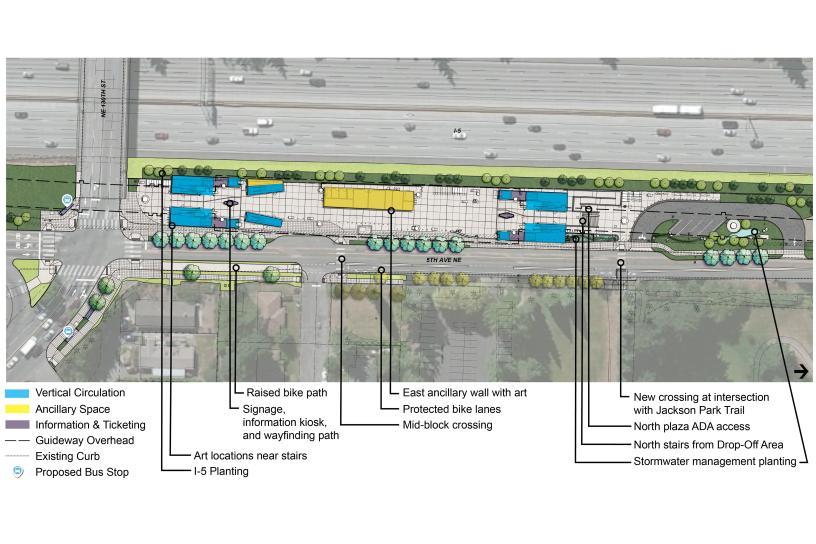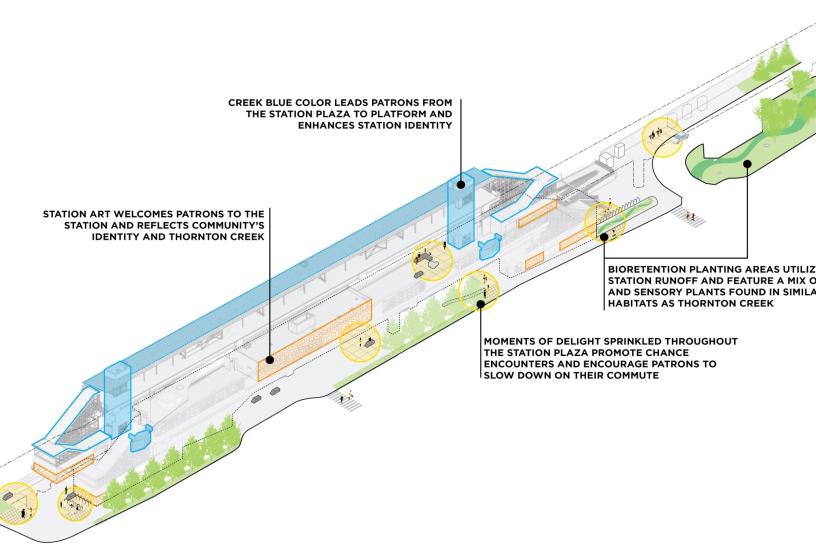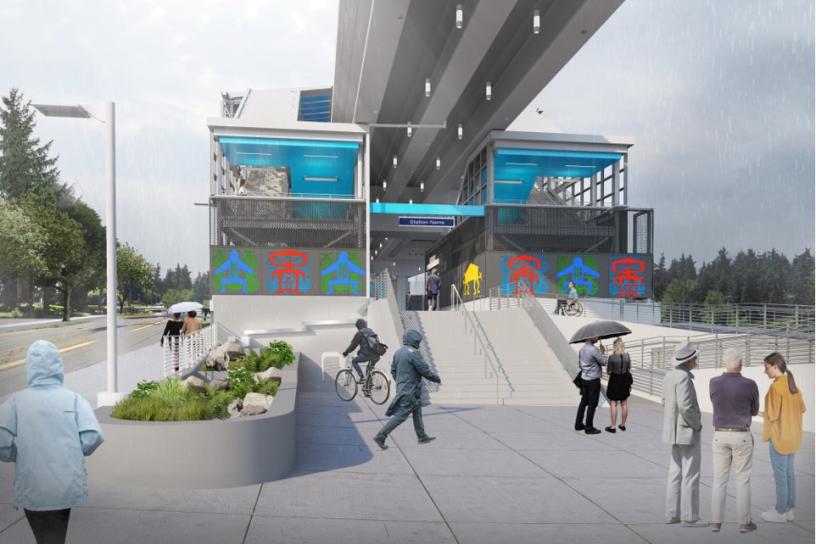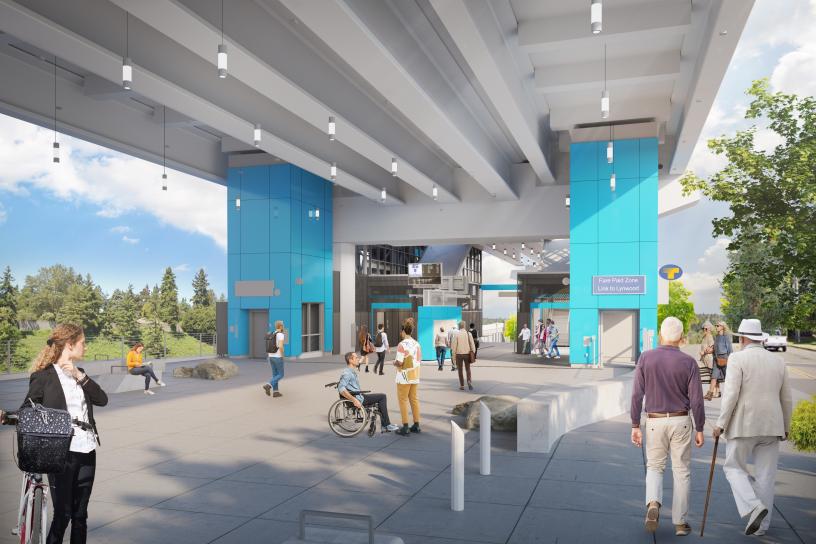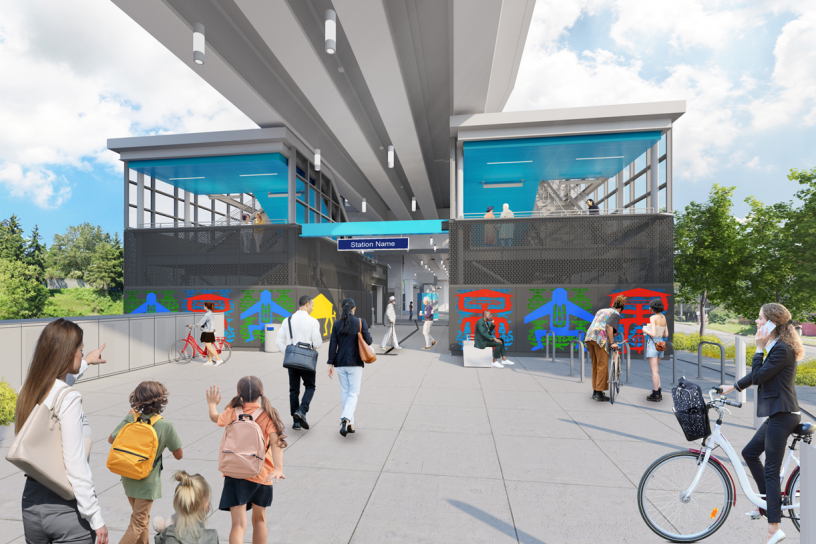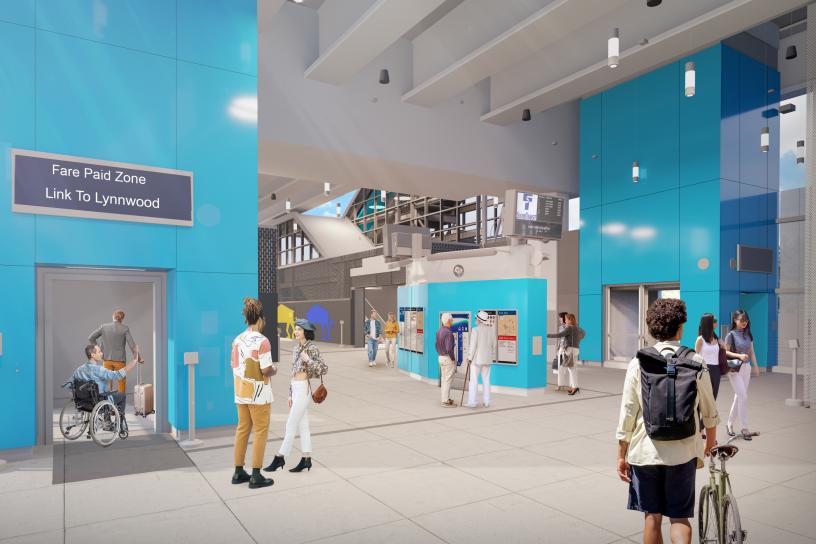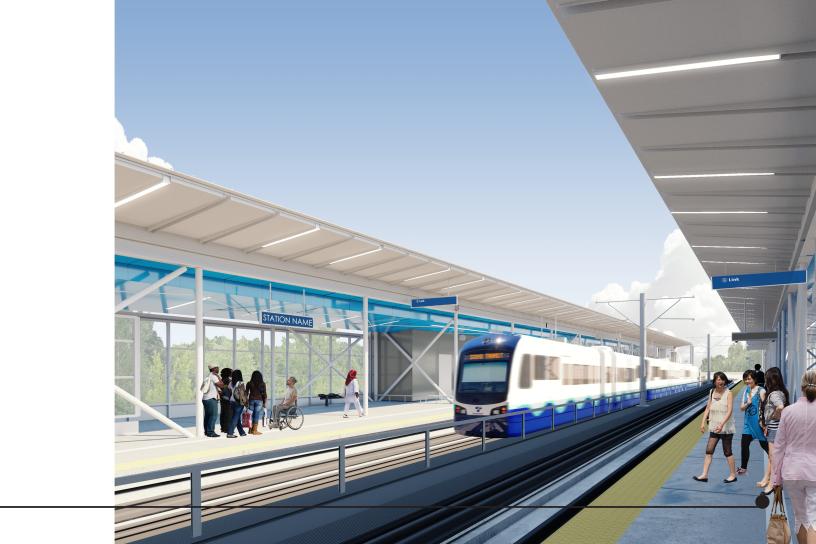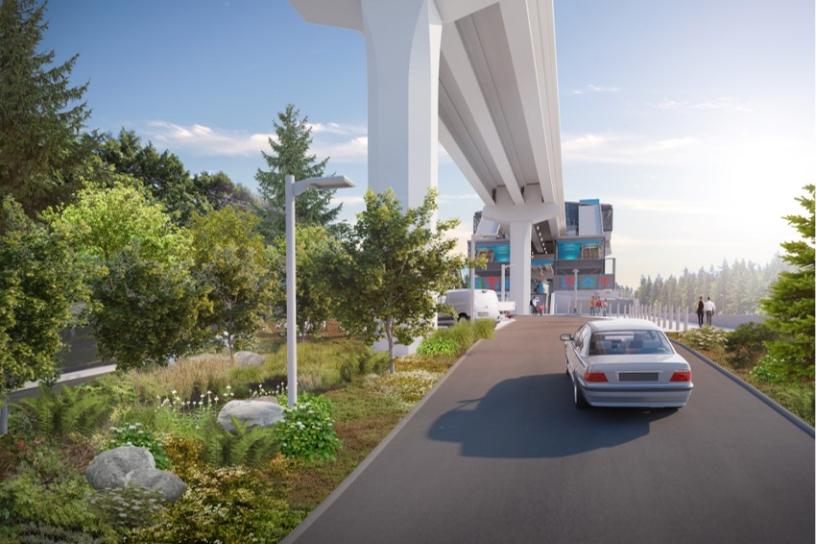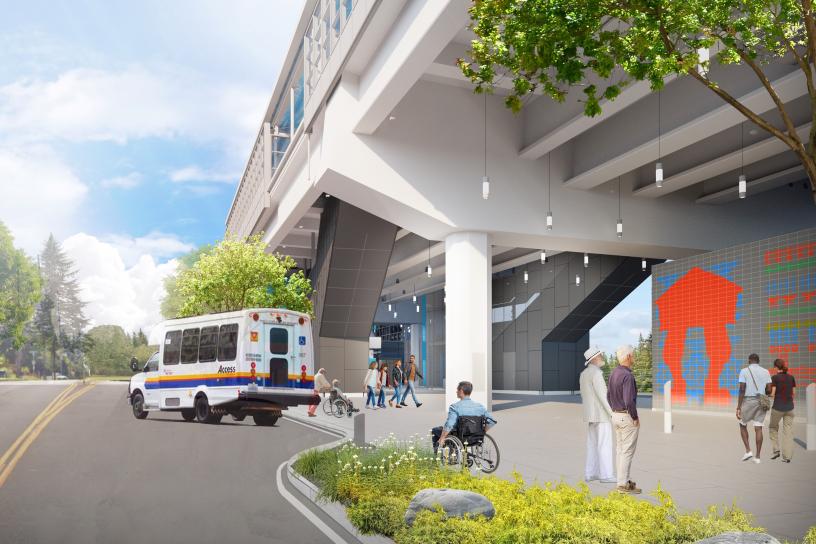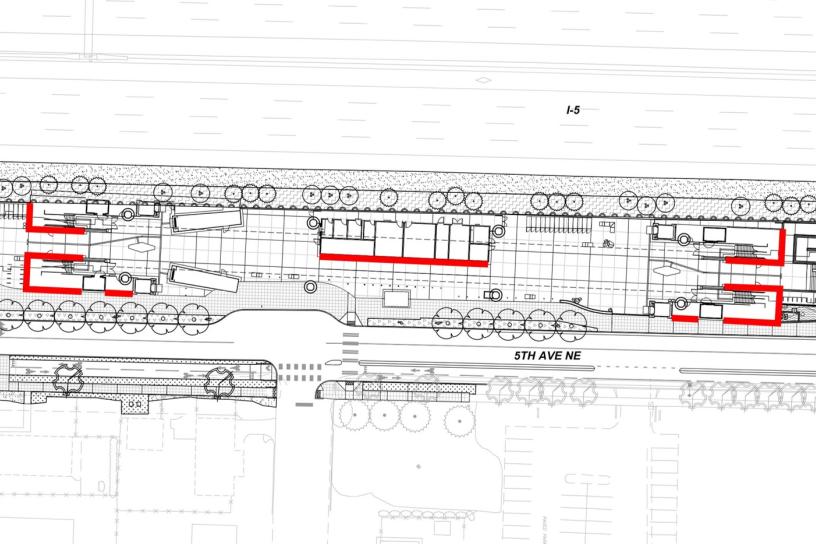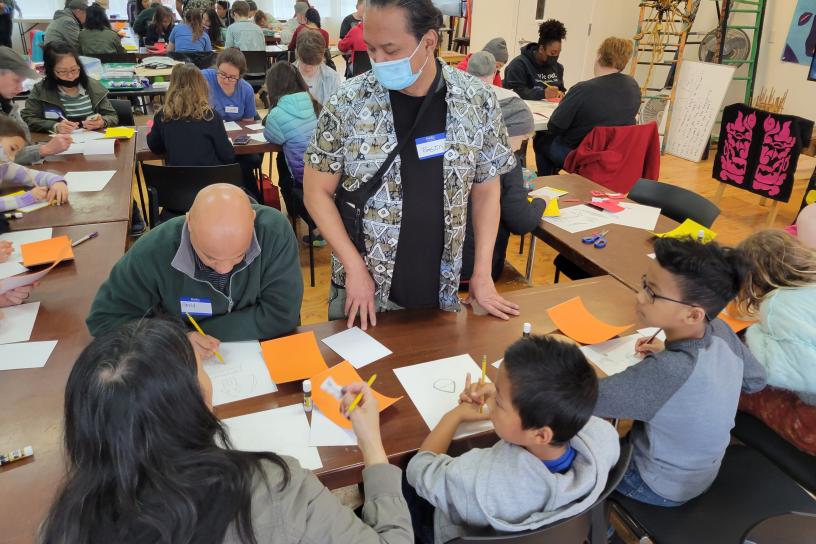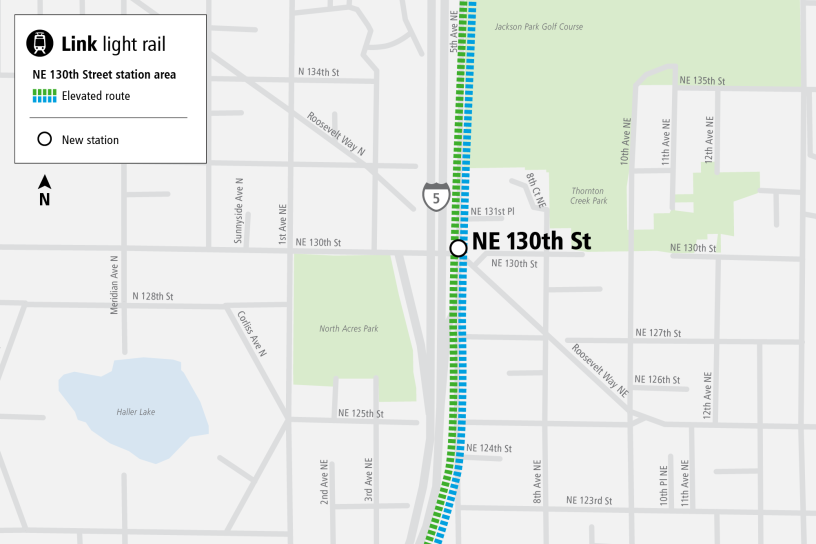
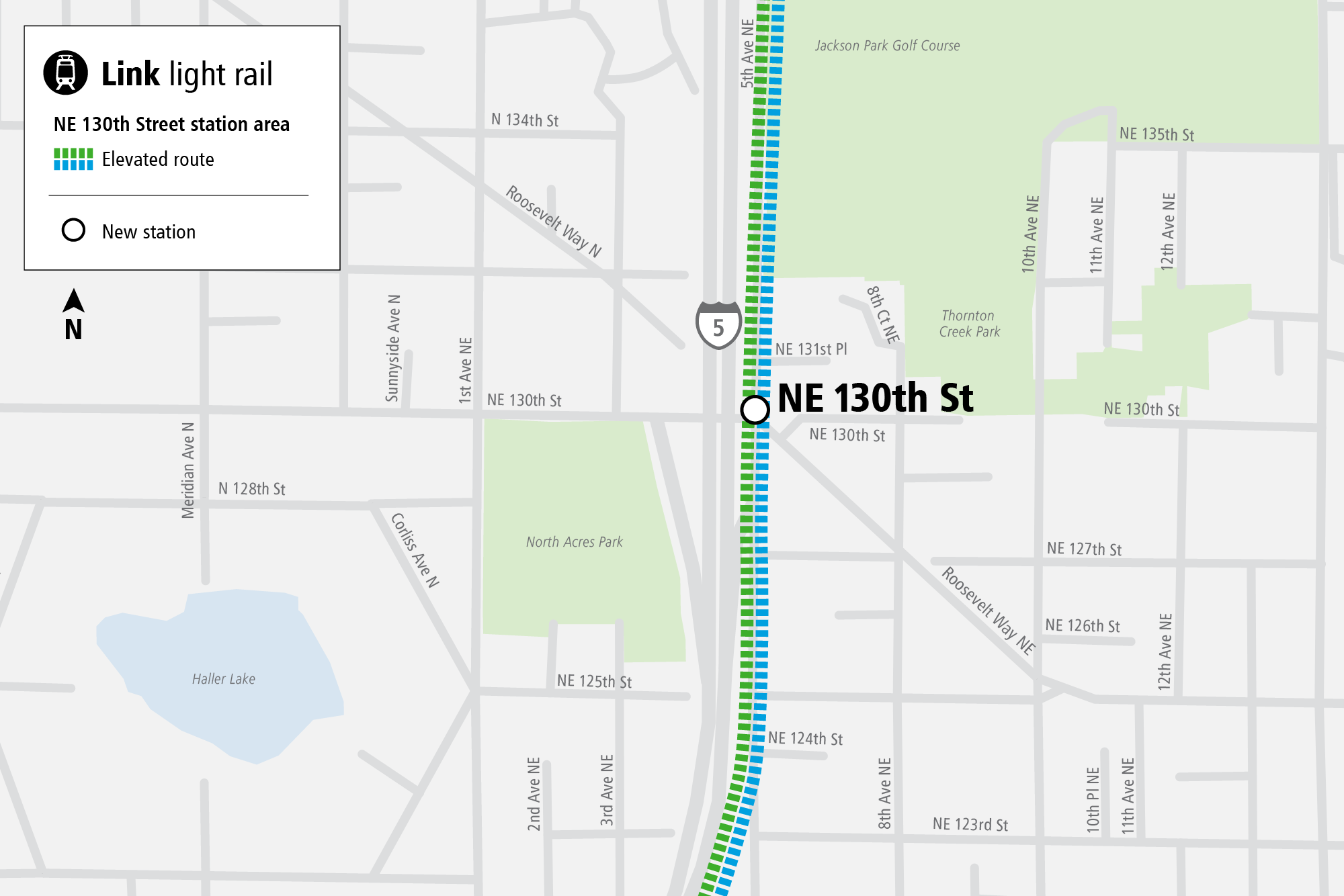
NE 130th St Infill Station project updates
Get the latest in your inbox.
Visit our online open house to learn more and stay current with the NE 130th Infill Station project progress.
Overview
In 2016, voters approved the addition of a light rail station to the Lynnwood Link Extension at NE 130th Street. The new station will serve a growing residential neighborhood between the Northgate and Shoreline South/148th stations. The NE 130th Street Infill Station is scheduled to open in 2026.
Facts
Service: Every 4 - 6 minutes during peak hours.
Travel times: NE 130th to Westlake - 15 minutes
Station Design
Station design process
Voters in 2016 approved the addition of three infill stations, with added to the Lynnwood Link Extension at NE 130th in north Seattle. Following preliminary engineering, the Sound Transit Board authorized acceleration of station design and construction for the purpose of minimizing the impact to LLE service, which is scheduled to begin July 2024. The project team shared 60% designs with the community in fall 2020 to gather input on specific design elements. This feedback was incorporated into ongoing design refinements. Design was completed in coordination with the City of Seattle, King County and the Washington State Department of Transportation including access improvements, right-of-way improvements, and traffic analysis. Sound Transit worked closely with the Seattle Design Commission to review the station design. The remaining permits from WSDOT and Seattle to authorize construction of the station are expected to be issued Q3 2023. Construction of final station finishes, station plaza, and nearby roadway improvements will begin in fall 2023.
Final design features
The station design reflects the unique identity of this neighborhood as an urban oasis, the community’s desire for a modern design, and pride in nearby natural resources of Thornton Creek. The design incorporates bright color and art, seating areas, native landscaping, and natural elements such as stormwater retention features and boulders. Renderings of the final station design are included at the top of this section.
The Sound Transit design team incorporated the feedback we received in fall 2020 to the final station design. Community members were asked to share their preferences for color, seating, and bollards. The blue color preferred by the community was used extensively throughout the station finishes, associated specifically with points of vertical circulation (stairs, elevators, and escalators). The seating elements include both weathered boulders that reflect the station design’s recognition of nearby Thornton Creek, as well as shaped concrete benches located throughout the plaza areas. The bollards are a modern stainless steel type with a sloped top.
Public art
Artist Romson Bustillo, a Seattle-based artist, is developing designs for the station artwork. Bustillo was born on the island of Mindanao in the Philippines. His layered works and immersive collaborations go back to his Philippine lineage, his South Seattle/Pacific Northwest upbringing, and numerous research travels. An artist selection panel made up of members from the community and of art/design professionals were drawn to the intricate detail in his prints and his inter-disciplinary studio work, and chose Bustillo to create artwork for the NE 130th Station based on his previous work and his vision for the site.
The elevated station made Bustillo think of the dwellings in his home country from his childhood, and he is developing an iconography of patterns for the station walls. Bustillo’s intention is to create an inviting work that conveys an optimistic future, and that supports story-telling, encourages discovery, and contributes to wayfinding. At the south entrance, painted artwork will turn the guideway column into a beacon that welcomes passengers as they approach the station. Bustillo’s design narrative will guide passengers as they enter and exit the station and make their way to the ticket vending machines and to the platforms. His artwork will be translated into richly colored, porcelain enamel panels that wrap around the entrances and into both north and south lobbies. The service building, in the center of the station, will also house a 100-foot-long mural featuring his visual-language inspired by the neighborhood.

